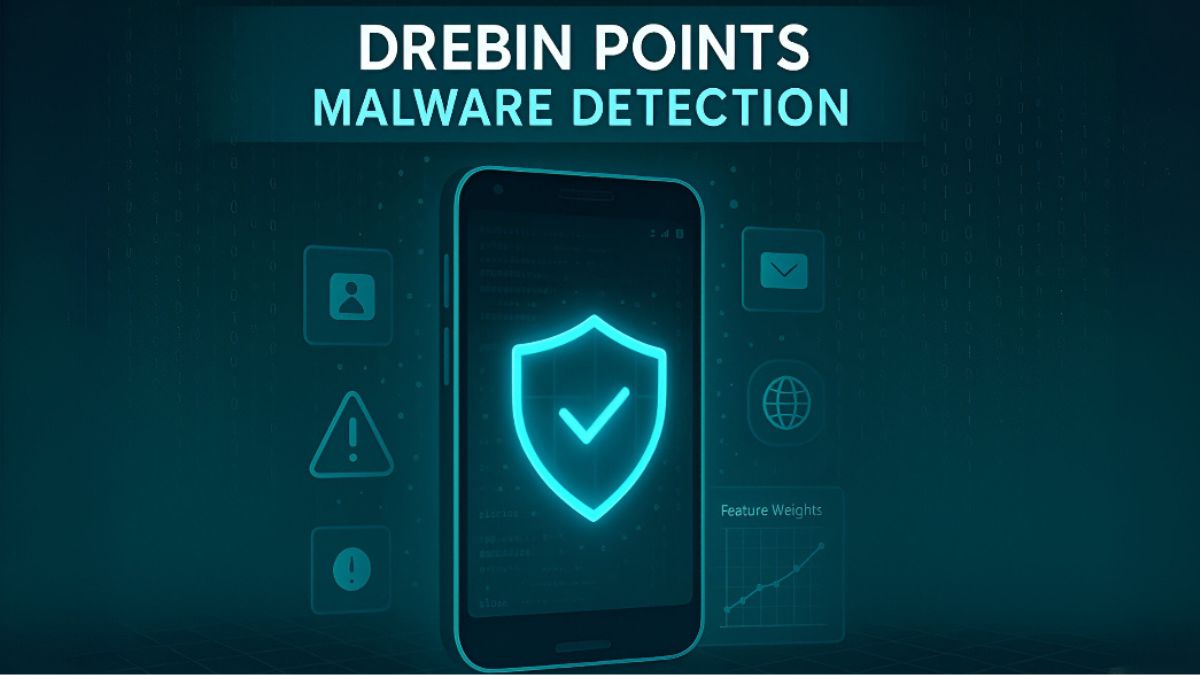Drebin Points: Unveiling the Key to Explainable Android Malware Detection

In a digital era dominated by smartphones, the security of Android devices has never been more critical. Threat actors constantly evolve, exploiting ever more sophisticated tactics to compromise user privacy and data. Amidst this evolving threat landscape, DREBIN emerged in 2014 as a groundbreaking approach to malware detection, offering a novel combination of efficiency, explainability, and on-device functionality. Central to DREBIN’s methodology—and particularly its claim to fame—are what are termed “drebin points.” In this comprehensive article, we will explore how drebin points work, why they matter, and their lasting influence on Android malware analysis.
What Are Drebin Points?
Understanding the Basics
DREBIN operates entirely through static analysis—that is, it examines an app’s code and manifest without running it. Through this process, DREBIN identifies a wide range of indicators:
-
Permissions declared by the app
-
Suspicious API calls
-
Network addresses (e.g. IPs, domains) embedded in code
-
Intents, components, and embedded targets in code
Each of these features is converted into a binary presence indicator forming a large vector. A linear Support Vector Machine (SVM) is then trained on a massive dataset of benign and malicious applications. The trained model assigns each feature a corresponding weight—the drebin point—reflecting its contribution to classifying an app as malicious (positive weight) or benign (negative weight).
Feature Weights and Final Score
Every time an app is analysed, DREBIN sums the drebin points of all features found within the app. If this total score exceeds a pre-defined threshold, the app is flagged as potentially malicious. Thus:
-
Positive drebin points increase suspicion
-
Negative drebin points reduce suspicion
-
The final score is simply the sum against the threshold
This process enables on-device execution, requiring just seconds per app—typically under ten seconds on modern devices .
Why Drebin Points Matter
Efficiency and On-Device Deployment
Conventional malware detection often requires dynamic, runtime analysis—a resource-intensive process impractical on typical smartphones. DREBIN sidesteps this by relying on static feature extraction and a linear model. Consequently, it can execute quickly on-device with minimal overhead while scanning hundreds of thousands of samples efficiently.
Explainability – A Differentiator
What sets DREBIN apart is its commitment to transparency. When malware is detected, DREBIN can report which features contributed most to the malicious verdict. These explanations make it a powerful tool for analysts and mobile users alike:
-
“Uses
SEND_SMS” -
“Contacts suspicious domain X”
-
“Invokes sensitive API
…”
These insights empower human experts to verify, investigate, or discount alerts based on context.
Benchmarking and Academic Legacy
Following its introduction, DREBIN became one of the most widely used benchmarks for Android malware detection research. It established the framework for feature-based static analysis, spawning numerous comparative studies, including deep learning-based approaches that benchmark against DREBIN’s feature sets and accuracy rate.
How Drebin Points are Derived
Building the Static Feature Set
DREBIN extracts features via static analysis of both code and manifest files. The team identified eight feature categories including permissions, API calls, network addresses, and more. The result is a vast keyword vocabulary totalling tens of thousands of binary features.
Training a Linear SVM
-
A labelled dataset of benign and malware apps is assembled.
-
Each app is vectorised using the feature set.
-
A linear SVM is trained to distinguish malware from benign samples.
-
The SVM outputs a numerical weight for each feature—these are the drebin points, equivalent to the model’s coefficients.
Threshold Calibration
The SVM threshold is tuned such that the model achieves approximately 94% detection rate with a 1% false positive rate .
Interpreting Drebin Points
Positive vs Negative Points
-
Features with high positive points strongly indicate malicious intent
-
Features with negative or near-zero points indicate benign or irrelevant activity
Thus, when specific features likeSEND_SMS, orexecCommandappear, they add significantly to the app’s cumulative score.
Contribution Ranking
Beyond binary classification, DREBIN can output a ranked list of top‑positive features that pushed the app over the malicious threshold. This allows users to drill down into whether an alarm was triggered by genuinely suspicious indicators or false positives such as legitimate apps with necessary permissions.
Limitations & Adversarial Challenges
Vulnerable to Evasion
Because DREBIN relies on static feature presence, it is susceptible to obfuscation, encryption, or minor feature tweaks. Research has demonstrated that small modifications to features can dramatically reduce detection rates—some malware variants bypassed detection entirely.
Concept Drift Over Time
Android and malware evolve. Thus, datasets and feature–weight relationships change over time. Longitudinal studies such as LAMDA reveal that detection accuracy degrades unless models are updated to reflect evolving feature distributions.
Limited to Static Analysis
Static analysis misses behavioural nuances: runtime API calls, network activity, timing signals, user-driven execution. Modern detection systems often blend static and dynamic analysis or apply deep learning to overcome these gaps .
The Broader Impact of Drebin Points
Catalyst for Explainable Security
DREBIN demonstrated that malware classifiers need not be “black boxes.” Its feature‑weight transparency inspired a wave of research in explainable AI for security—especially those refining or extending its approach.
Foundation for Feature‑Based Benchmarks
Research ecosystems continue to build upon DREBIN’s extracted features. Many modern classifiers—static, dynamic, shallow, or deep—benchmark against DREBIN’s feature set, often incorporate its extracted feature vectors, and compare their performance and explainability against DREBIN’s .
Inspiring Hybrid Models
Contemporary approaches fuse DREBIN’s static detection with dynamic inputs, neural architectures, and sequence models. Examples include hybrid DBN-GRU frameworks that use static features from the DREBIN dataset for state‑of‑the‑art accuracy rates approaching 98‑99% .
Best Practices When Utilising Drebin Points
-
Regularly retrain SVM with recent data to counter concept drift
-
Augment with dynamic analysis (e.g. API tracing, network monitoring)
-
Defend against adversarial inputs via techniques like adversarial retraining
-
Leverage explainability to prioritise investigative effort and reduce false positives
-
Constant feature auditing to refine detection whilst reducing feature noise
Future Directions
Dynamic Feature Integration
Static features alone are increasingly insufficient. Future iterations may prioritise hybrid feature sets—including sensitive system calls, inter‑process communication, cryptographic behaviour.
Robustness Against Evasion
Defensive techniques—like adversarial retraining and perturbation resistance—should be integrated to harden weight assignments against manipulations aimed at masking behaviour.
Temporal Adaptivity
To combat evolving malware, models (and drebin point values) should be continuously updated using pipelines like LAMDA, which spans a dozen years of data. Such updates maintain drift‑resistant accuracy .
Explainability Beyond Features
While drebin points provide excellent insight into which features influenced detection, future endeavours must further contextualise those feature contributions: clustering, semantic labelling, overlayed behaviour graphs, and other visualisation tools.
Conclusion
In summary, drebin points are the lifeblood of DREBIN’s explainable, efficient static‑analysis detection engine. Their value lies not simply in classification accuracy, but in how they empower users and analysts to understand, evaluate, and refine malware detection. Although limitations exist—particularly with adversarial evasion, concept drift and dynamic context—drebin points remain a cornerstone in Android malware research.
By combining efficient static analysis with machine learning transparency, DREBIN demonstrated that security could be both lightweight and intelligible. Even as newer approaches supplement or surpass it in raw accuracy, the concept of weighted, explainable features lives on. Drebin points have earned their place as a foundational pillar in both practical mobile security and academic research—a legacy likely to endure well into the future.



